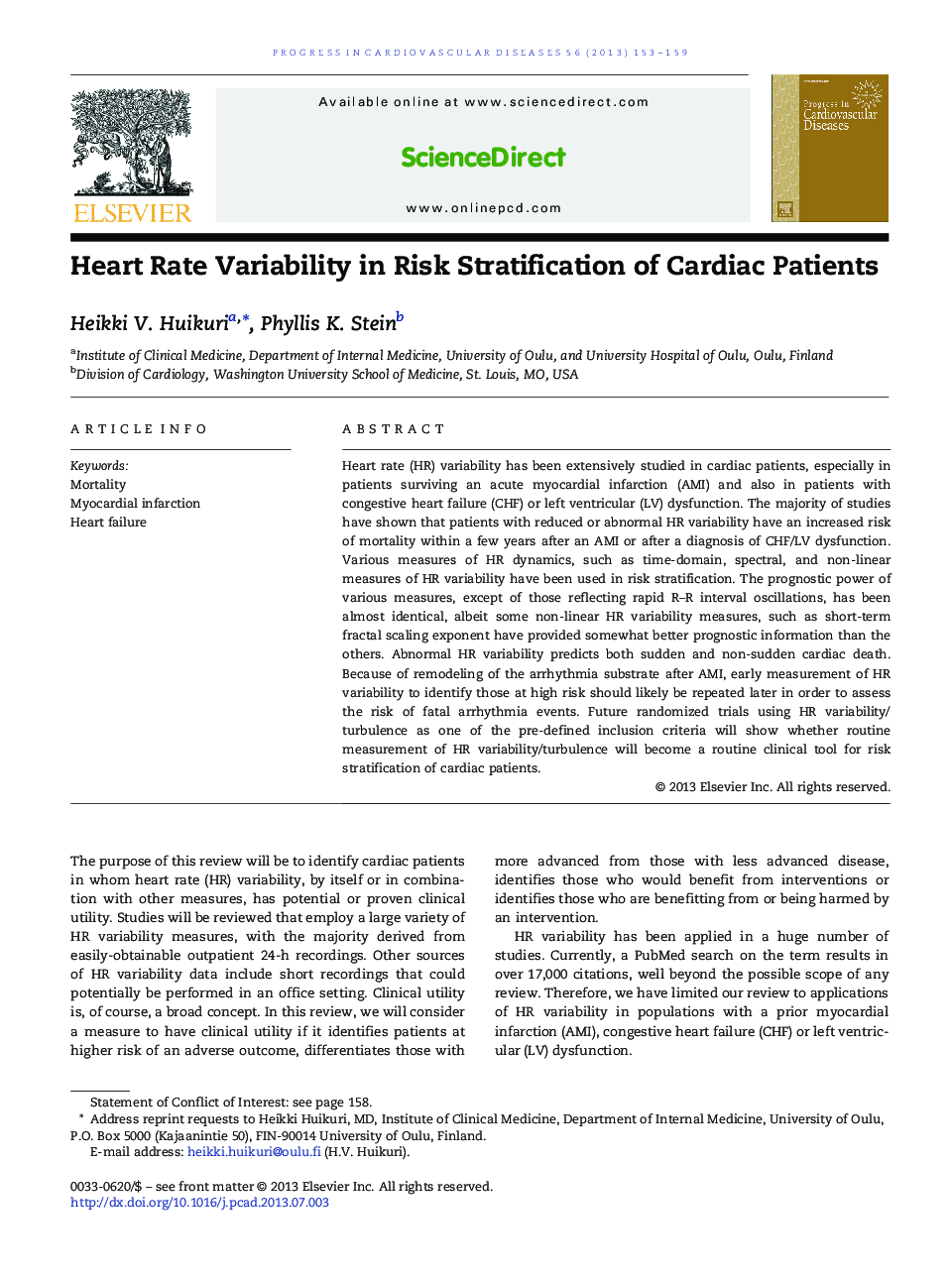| Article ID | Journal | Published Year | Pages | File Type |
|---|---|---|---|---|
| 3006403 | Progress in Cardiovascular Diseases | 2013 | 7 Pages |
Heart rate (HR) variability has been extensively studied in cardiac patients, especially in patients surviving an acute myocardial infarction (AMI) and also in patients with congestive heart failure (CHF) or left ventricular (LV) dysfunction. The majority of studies have shown that patients with reduced or abnormal HR variability have an increased risk of mortality within a few years after an AMI or after a diagnosis of CHF/LV dysfunction. Various measures of HR dynamics, such as time-domain, spectral, and non-linear measures of HR variability have been used in risk stratification. The prognostic power of various measures, except of those reflecting rapid R–R interval oscillations, has been almost identical, albeit some non-linear HR variability measures, such as short-term fractal scaling exponent have provided somewhat better prognostic information than the others. Abnormal HR variability predicts both sudden and non-sudden cardiac death. Because of remodeling of the arrhythmia substrate after AMI, early measurement of HR variability to identify those at high risk should likely be repeated later in order to assess the risk of fatal arrhythmia events. Future randomized trials using HR variability/turbulence as one of the pre-defined inclusion criteria will show whether routine measurement of HR variability/turbulence will become a routine clinical tool for risk stratification of cardiac patients.
